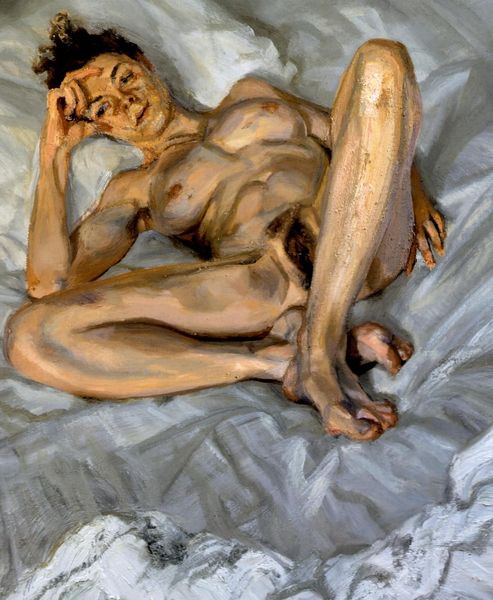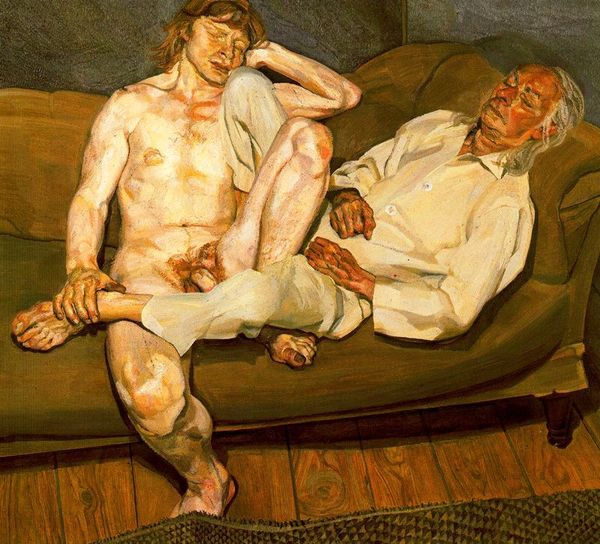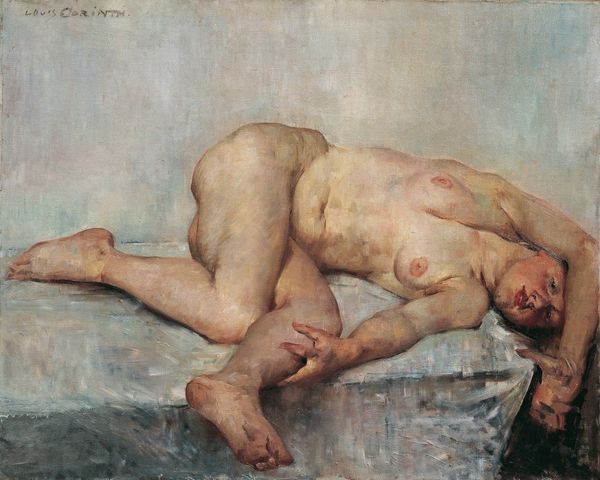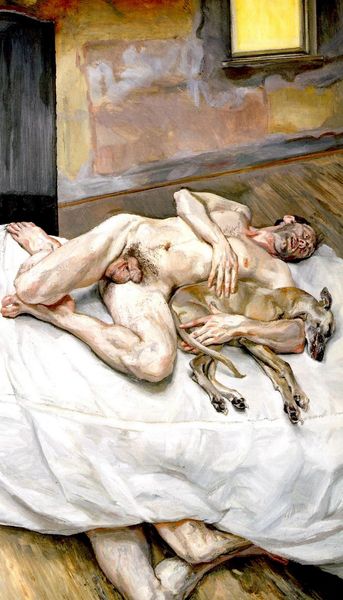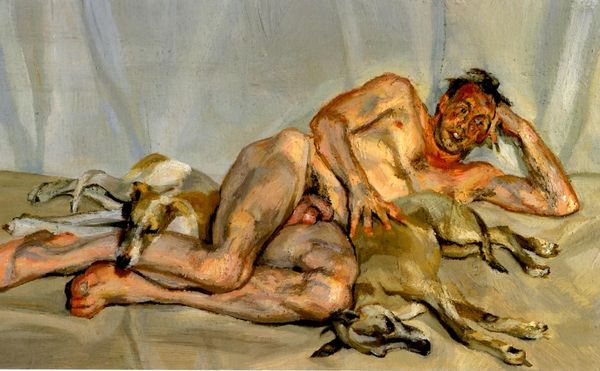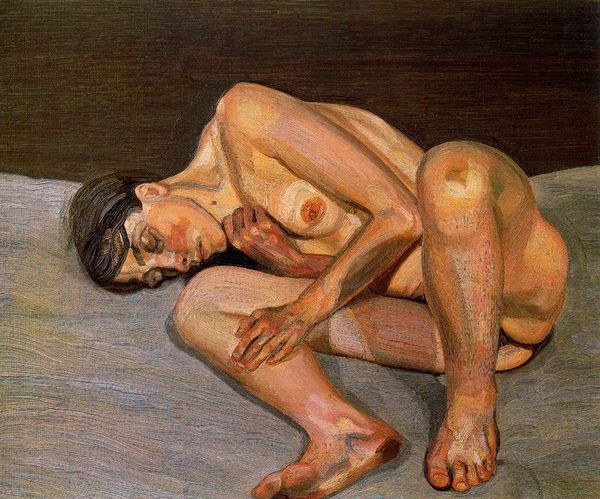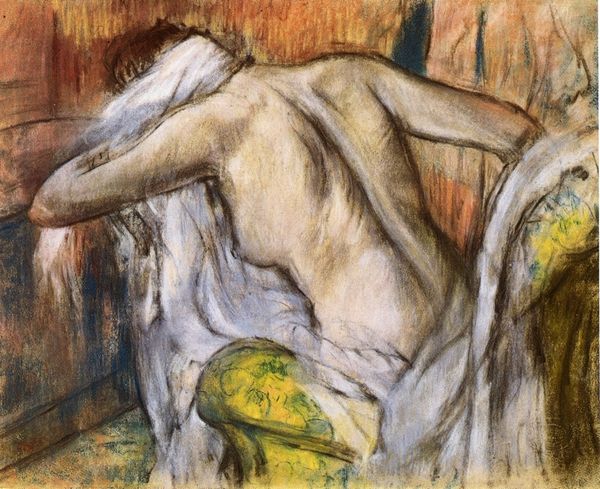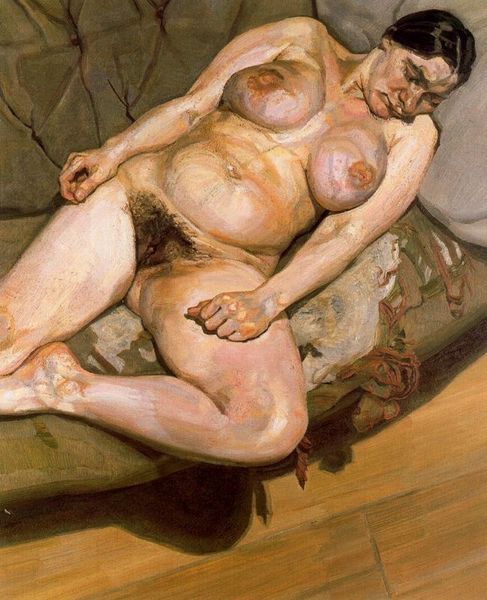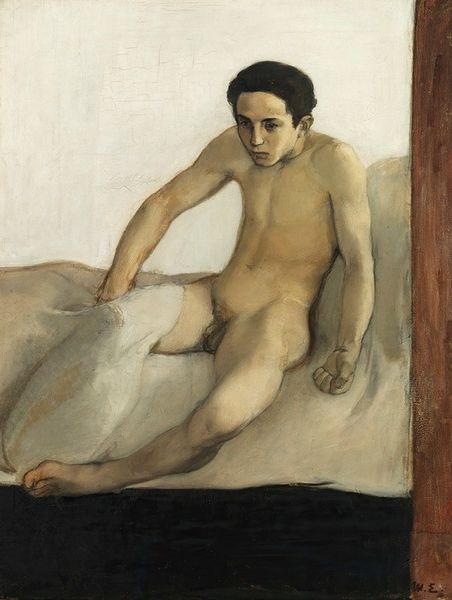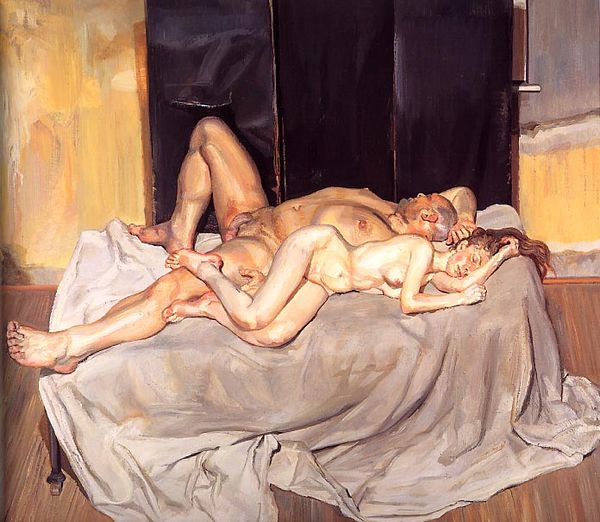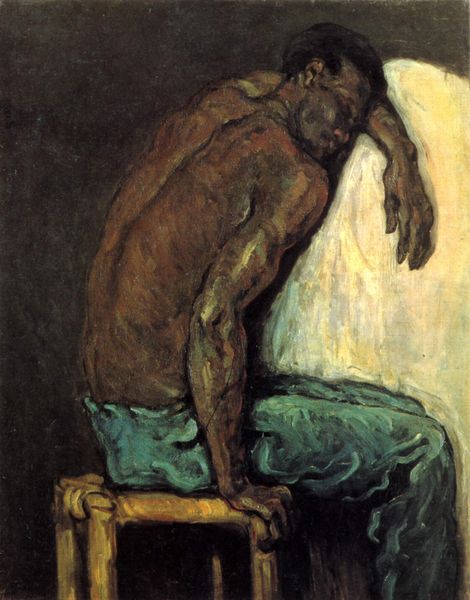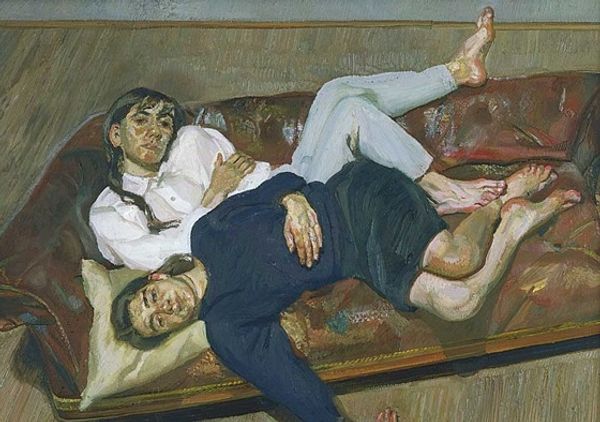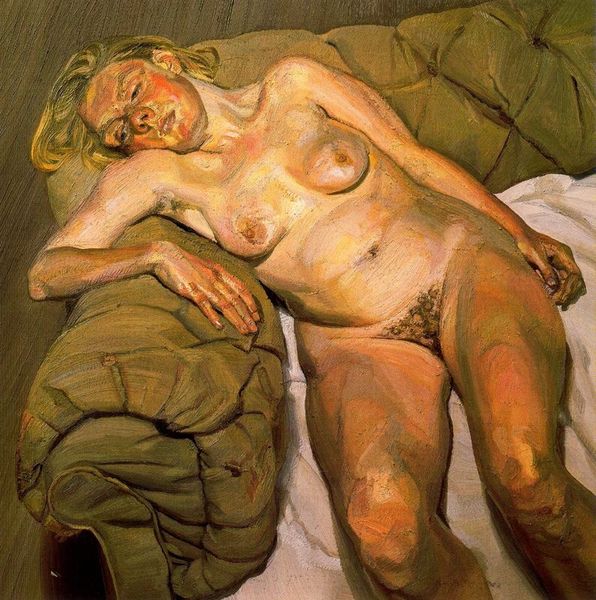
oil-paint
#
portrait
#
oil-paint
#
figuration
#
oil painting
#
human
#
nude
#
realism
Dimensions: 75 x 106.7 cm
Copyright: Lucian Freud,Fair Use
Curator: This is Lucian Freud's "Two Men," an oil painting from 1988 currently residing at the Scottish National Gallery of Modern Art. Editor: First thought? Vulnerability. It’s stark, isn't it? Like peering into a very private moment, heavy with unspoken things. The textures make me think of worn skin, old stories. Curator: Indeed. Freud's handling of the medium is key here. Observe the impasto technique—the thick application of paint creating a palpable sense of weight and form, especially on the figures' bodies. The work exists within the tradition of realism, though pushes the boundaries toward expressionism, focusing on revealing inner emotional states. Editor: Expressionism... yeah, I can see that. There's an unease about it, almost like the air's thick with a silent tension. They're together, but also very separate, very isolated. Is that reading too much into it? Curator: Not at all. Freud’s composition is deliberately unsettling. Note how one figure is fully clothed, the other nude, inviting an inquiry into power dynamics and vulnerability. Semiotics are valuable when considering that dynamic in the image’s framework. Editor: The light's interesting too, isn't it? Harsh, unforgiving. It really accentuates every line, every imperfection. Makes everything feel raw. And I'm not sure I'm meant to be seeing it. Do you get what I mean? Curator: Certainly. The clinical lighting and slightly elevated perspective create a voyeuristic tension. It underscores a detachment. Consider also, though, how the positioning guides the eye— from the almost luminous naked figure to the clothed man who anchors the viewer with the reality of his attire. Editor: It almost makes the skin look sculptural, doesn’t it? Like you could reach out and feel the dips and rises of the bodies. Makes me think, too, of what’s not shown…the bits that remain hidden… adds to that feeling of things unsaid. Curator: Precisely. Its materiality speaks to this tension, a discomfort, and raw human presence rendered so intensely. The narrative becomes less about observation, and more about our psychological perception, almost a visceral sensation when looking at Freud’s practice. Editor: After all this, I’m left feeling... well, more present myself. I appreciate seeing his process, too, somehow seeing myself through that rough, unforgiving depiction. What's your final thought? Curator: The brilliance resides in how this painting uses hyperrealism as a tool to lay bare emotional states. Ultimately, this piece pushes against boundaries. And how wonderfully, unapologetically Freud shows us.
Comments
No comments
Be the first to comment and join the conversation on the ultimate creative platform.
